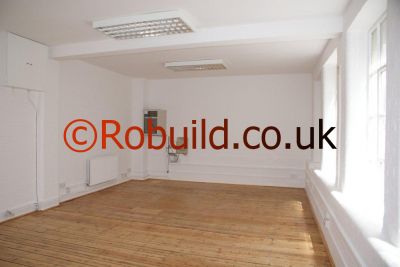
Most homes have timber floors in upstairs rooms but in houses built in Britain since 1945 and in recent extensions to older houses – you will often find that the ground floor rooms have solid floors. As both timber and solid floors can be covered with wood blocks or plastic tiles it may not be immediately obvious which type you are dealing with. So always check first what sort of floor you have.
Timber floors downstairs consist of boards or sheets of chipboard nailed over sturdy timber joists, which are often supported on low walls (called sleeper walls). Upstairs the joists may be built into opposite walls or supported in galvanized steel brackets (joist hangers). As they are supported on joists, timber floors are also called suspended floors. Unlike solid floors they make a hollow sound when stamped on and also have a certain amount of bounce. Another means of recognizing a timber floor downstairs is the presence of airbricks on the outside walls just above soil level.

These bricks allow air to circulate beneath the floor to keep it dry and free of rot. Solid floors at ground level do not have airbricks. Fixing loose and squeaky boards Loose boards move when you walk on them and will increase wear on any floor coverings laid over them. They may also develop annoying squeaks and creaks as two faces of timber rub together. To cure this, refix the boards by nailing them down properly. Possibly not all the nails were replaced the last tin.re the boards were lifted: more likely the nails are loose. Renailing with cut floor brads or round head nails slightly to one side may solve the problem. but there is a danger this will cause the end of the board to split. It is better to drill small pilot holes and refix the boards, using No l0 countersunk screws 38mm long. The screws must pass into the joists. the position of which can be seen by the line of nail heads on the surface of the boards. If the boards are properly fixed but still squeak because they are flexing, the problem can be temporarily overcome by dusting the crack between the boards with French chalk or talcum powder. If the squeak returns, one of the boards must be lifted and the edge planed to give slight clearance.
Sometimes boards which have been properly fixed to the joists still spring up and down usually because the joists themselves are not properly secured. The only way to check this is to lift some boards in the affected area and examine the joists.
